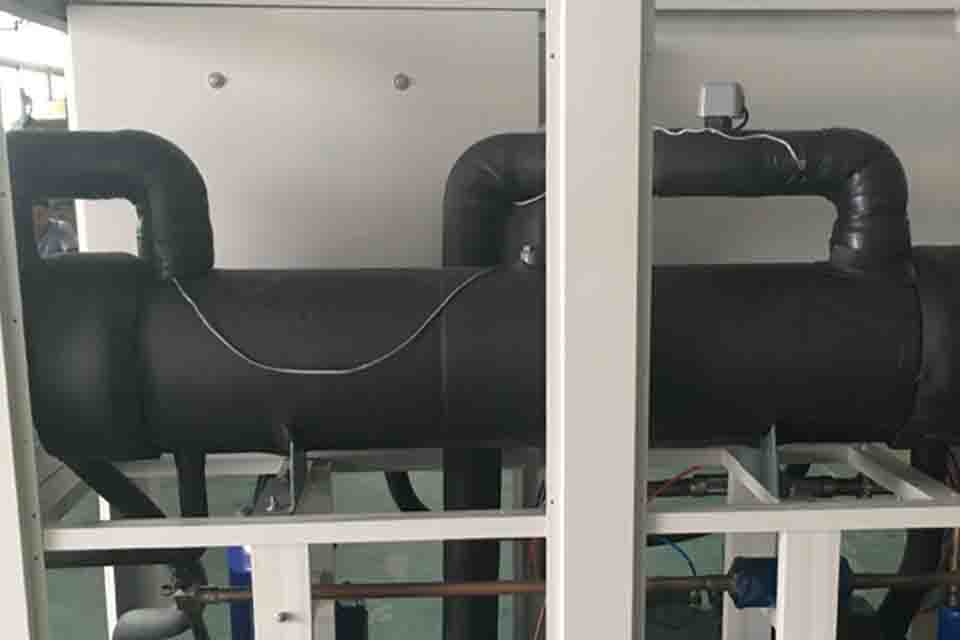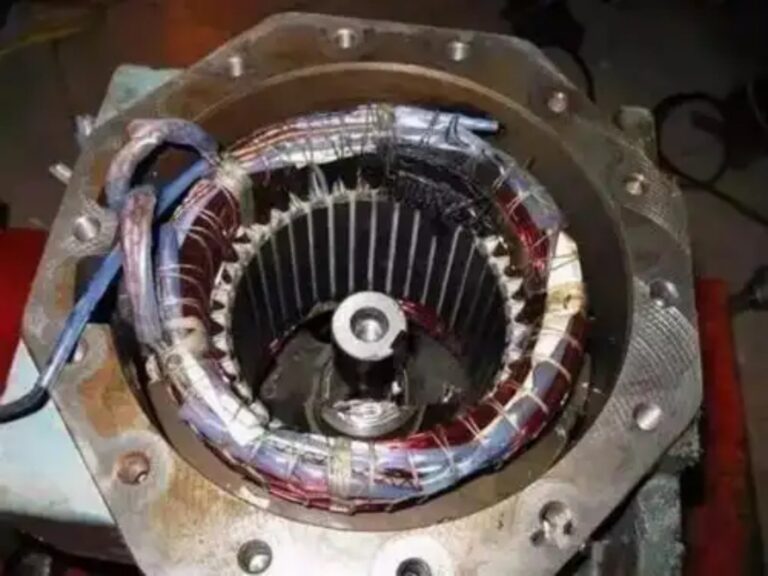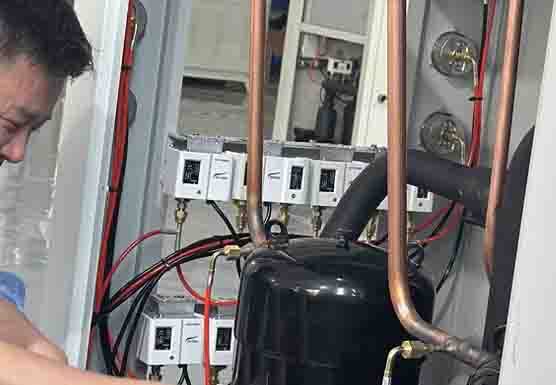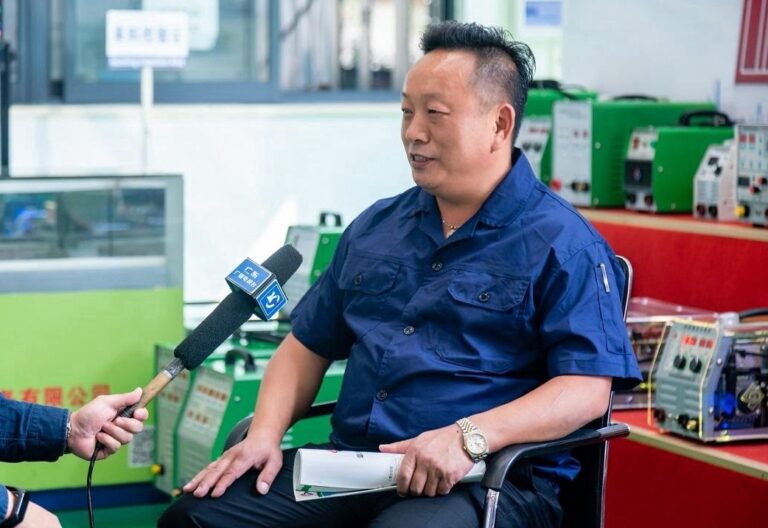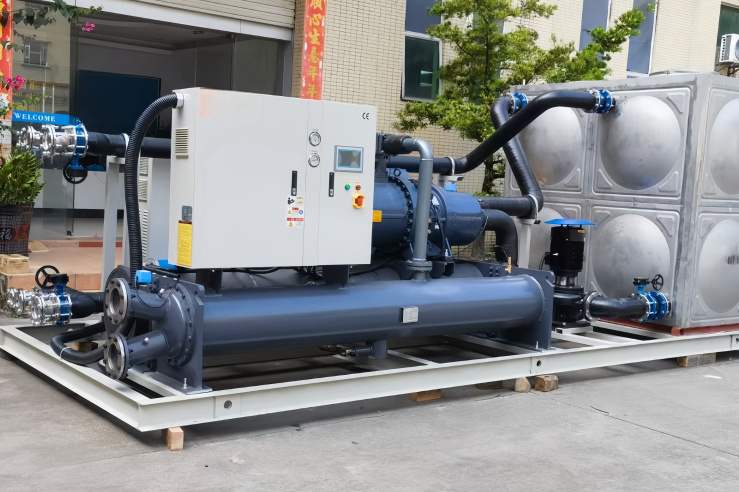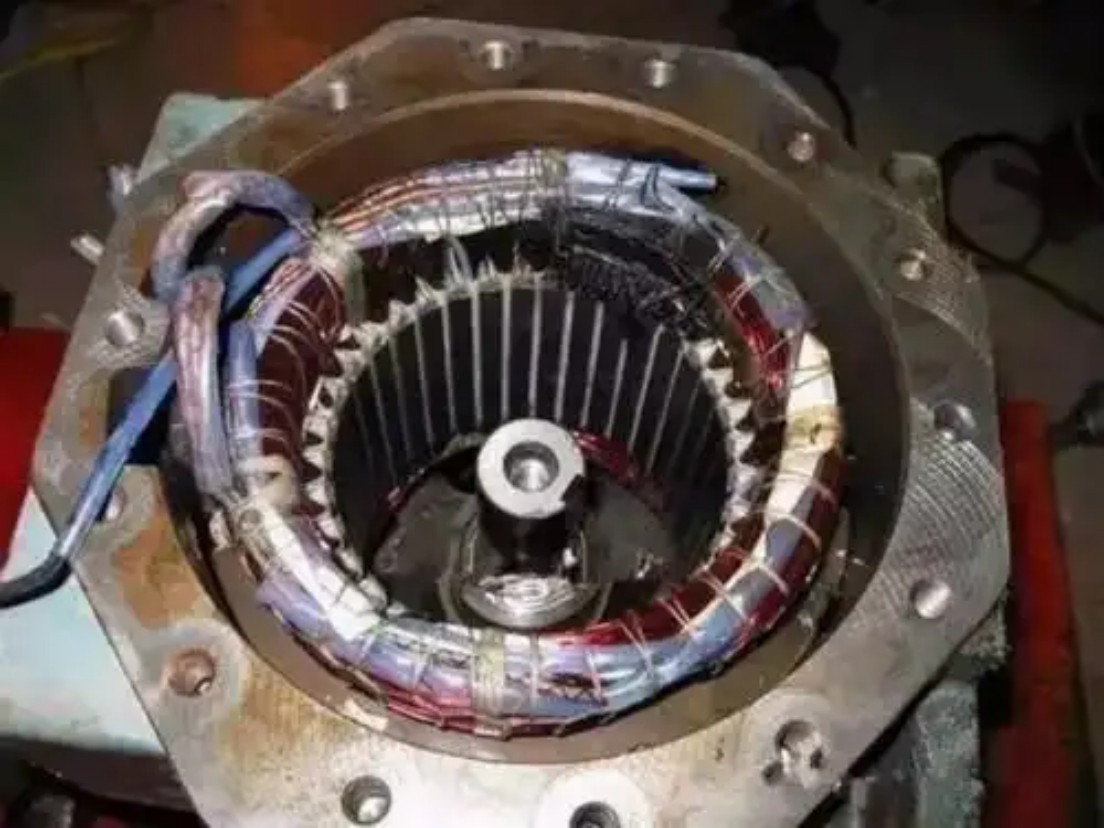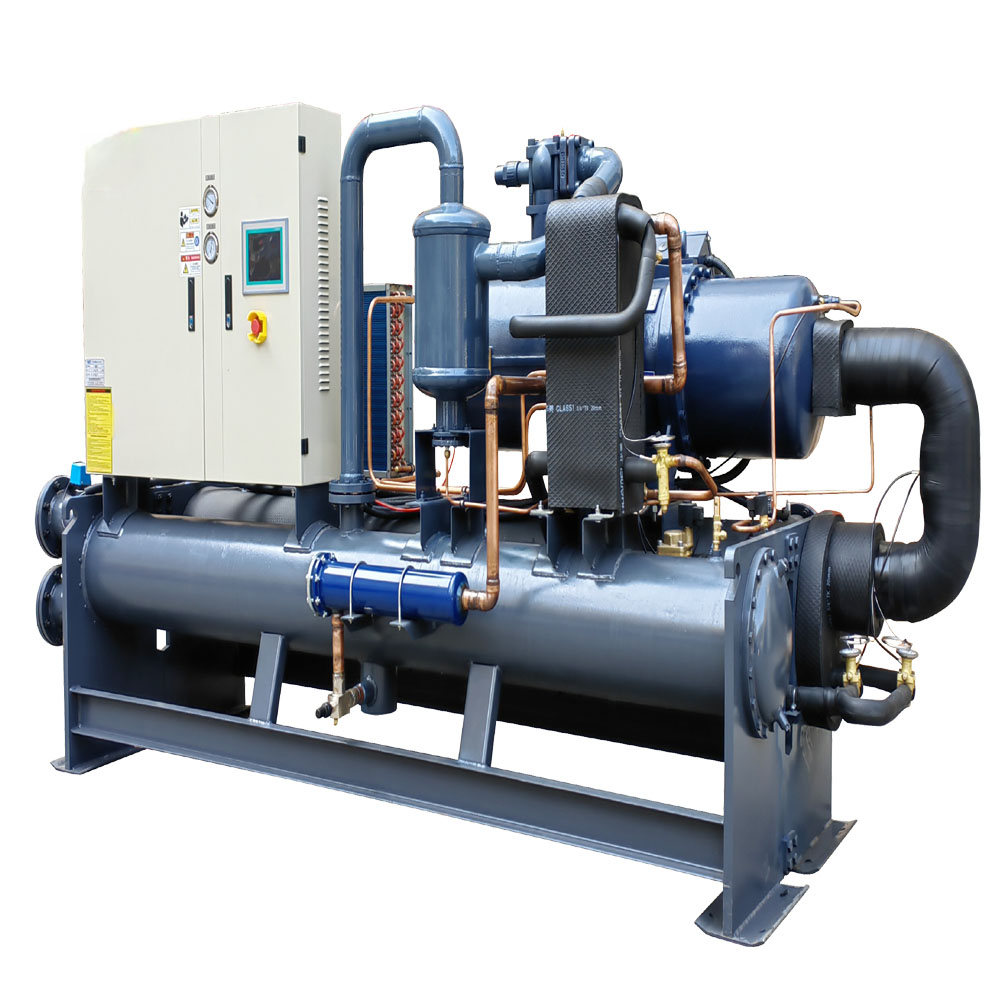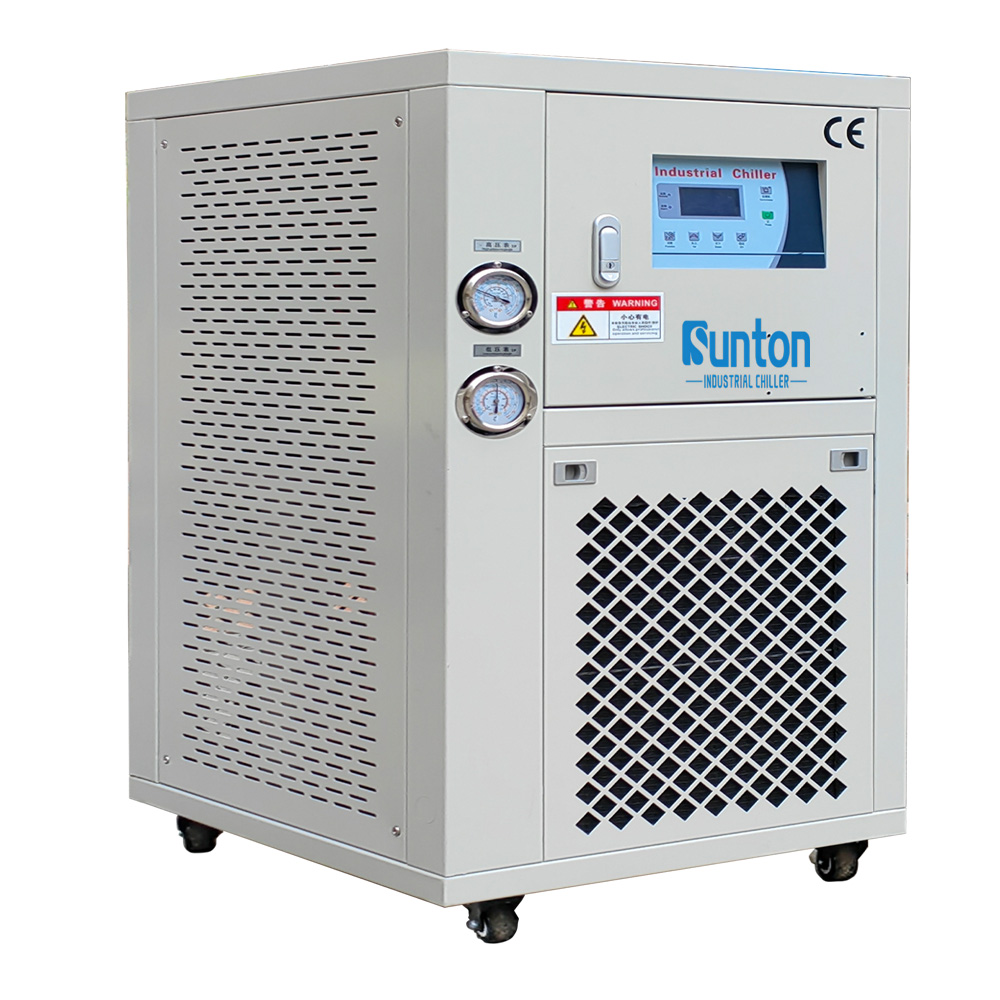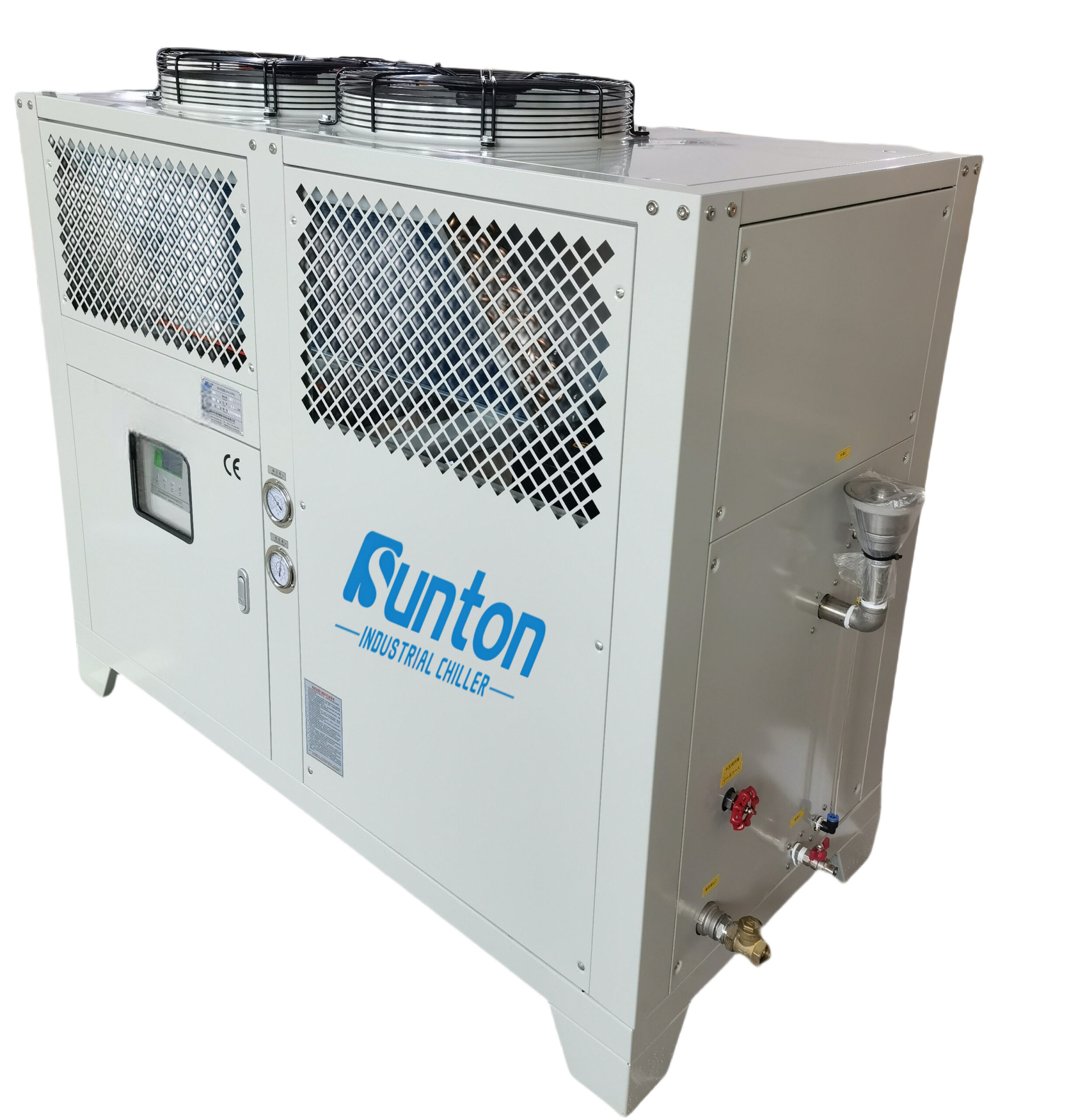-
อุตสาหกรรม Dalingshan กวางตุ้ง
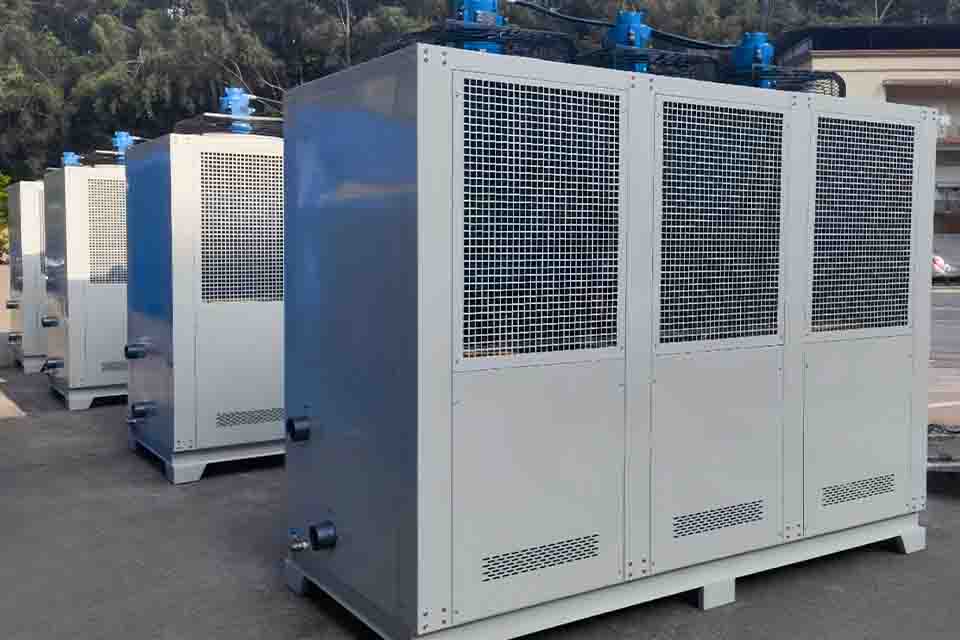
how do i choose my chiller
Choosing the Right Chiller: A Step-by-Step Guide for Your Application
บทความนี้ให้คำแนะนำที่ครอบคลุมเกี่ยวกับวิธีการ select a chiller that perfectly fits your needs, focusing on industrial applications. It covers the critical factors you must consider to ensure optimal performance, efficiency, and longevity of your ระบบทำความเย็น. Whether you’re in the Plastics and Rubber Industry, Machining Industry, or any other sector requiring precise temperature control, this guide is designed to help you make an informed decision, ultimately leading to cost savings and improved operational efficiency. This article is a worthwhile read because it breaks down complex technical details into simple, understandable language, ensuring that even those new to เครื่องทำความเย็น can grasp the essential concepts and make the เครื่องทำความเย็นที่ดีที่สุด choice for their specific requirements.
สารบัญ
เครื่องทำความเย็นอุตสาหกรรมคืออะไร และทำงานอย่างไร?
หนึ่ง เครื่องทำความเย็นอุตสาหกรรม เป็น ระบบทำความเย็น that removes heat from a liquid via a vapor-compression or absorption refrigeration cycle. This cooled liquid then circulates through a heat exchanger to cool equipment or another process stream (such as air or process water). As a necessary component, การทำความเย็น creates a continuous cycle of cooling and heat transfer.
In essence, a เครื่องทำความเย็น functions by circulating a น้ำยาหล่อเย็น, typically water or a water/ไกลคอล mixture, through a closed-loop system. The น้ำยาหล่อเย็น absorbs heat from the process or equipment, which then flows to the เครื่องทำความเย็น อยู่ที่ไหน สารทำความเย็น ภายใน เครื่องทำความเย็น ดูดซับความร้อน คอมเพรสเซอร์ แล้วเพิ่มความดันและอุณหภูมิของ สารทำความเย็น, which then flows to the คอนเดนเซอร์. Here, the heat is released, either to the ambient air in เครื่องทำความเย็นด้วยอากาศ or to a separate water source in water-cooled systems. My experience has shown me that understanding this basic principle is crucial for anyone operating in an industrial setting.
Why is Selecting the Correctly Sized Chiller Crucial?
Selecting a correctly sized chiller is vital for maintaining optimal performance and efficiency in your operations. An เครื่องทำความเย็นขนาดเล็กจะเสมอ struggle to meet the cooling demands, leading to inadequate การทำให้เย็นลง and potential damage to your process equipment and the process itself. My personal experience emphasizes that this can result in costly downtime and reduced productivity. This leads to issues where the เครื่องทำความเย็นจะไม่มีวันสามารถทำได้ ถึง properly cool the process equipment, leading to overheating and potential damage. Conversely, an oversized chiller will never operate at its peak efficiency, leading to higher energy consumption and unnecessary operational costs. Plus, the temperature will not be stable. การ เครื่องทำความเย็น might cool the process too quickly, leading to short cycling, where the เครื่องทำความเย็น turns on and off frequently. This not only wastes energy but also puts extra wear and tear on the เครื่องทำความเย็น components, reducing its lifespan. The oversized chiller will never be able to run at its rated capacity. Also, the initial investment for an oversized unit is higher, and it may require more space around the chiller for proper ventilation and maintenance, adding to the overall cost and complexity.
In simple terms, one size does not fit all. Getting the correct chiller ขนาด ensures that the system can handle the ภาระความเย็น efficiently, maintaining the desired process water temperature and extending the lifespan of your equipment. An เครื่องทำความเย็นขนาดเล็ก is like trying to cool a large room with a tiny fan – it simply won’t work efficiently. On the other hand, an เครื่องทำความเย็นขนาดใหญ่ is like using a massive air conditioner to cool a small closet – it’s overkill and wasteful. The ขนาดที่ถูกต้อง ทำให้มั่นใจได้ว่า เครื่องทำความเย็น operates within its optimal range, providing efficient การทำให้เย็นลง without unnecessary strain.
What are the Main Types of Chillers?
Broadly speaking, เครื่องทำความเย็น are categorized into two main types based on their heat rejection method: ระบายความร้อนด้วยอากาศ and water-cooled. เครื่องทำความเย็นแบบอากาศ use ambient air to dissipate heat, while เครื่องทำความเย็นด้วยน้ำ ใช้น้ำจาก หอหล่อเย็น or other water source.
เครื่องทำความเย็นแบบอากาศ เป็น easy to install and require less maintenance than water-cooled systems. They are typically preferred in applications where water is scarce or where a simple, self-contained system is desired. เครื่องทำความเย็นแบบอากาศ are typically ใช้แล้ว when the heat from the เครื่องทำความเย็น can be exhausted directly outside. However, they can be less efficient in อุณหภูมิแวดล้อมสูง. My firsthand experience confirms that these chillers are ideal for smaller setups. These เครื่องทำความเย็น use fans to blow ambient air across a คอนเดนเซอร์, which cools the สารทำความเย็น.
| คุณสมบัติ | เครื่องทำความเย็นด้วยอากาศ | เครื่องทำความเย็นด้วยน้ำ |
| การติดตั้ง | Simpler, no need for a cooling tower | ซับซ้อนมากขึ้น ต้องมีหอระบายความร้อนหรือแหล่งน้ำ |
| การซ่อมบำรุง | Lower, fewer components to maintain | Higher, requires regular cleaning of cooling tower |
| ประสิทธิภาพ | Generally lower, especially in high ambient temperatures | Generally higher, more consistent performance |
| ช่องว่าง | Can be larger, requires clearance for airflow | Can be smaller, but requires space for cooling tower |
| Noise | Louder due to fans | Quieter operation |
| การใช้น้ำ | No water consumption | ต้องการน้ำประปาอย่างต่อเนื่อง |
| แอปพลิเคชัน | Suitable for smaller to medium cooling loads | Ideal for large cooling loads and high-heat environments |
| ค่าใช้จ่าย | Lower initial cost | Higher initial cost |
| การใช้พลังงาน | More in warm temperatures | Less, efficient cooling |
| Indoor/Outdoor | Outdoor | Indoor |
เครื่องทำความเย็นด้วยน้ำ มีมากขึ้น efficient than air-cooled units, especially in อุณหภูมิแวดล้อมสูง, because water is a more effective การถ่ายเทความร้อน medium than air. They require a separate การทำให้เย็นลง water source, which can be a หอหล่อเย็น, a well, or a municipal water supply. เครื่องทำความเย็นด้วยน้ำ are generally more มีประสิทธิภาพ because water has a higher heat capacity than air, meaning it can absorb more heat. These เครื่องทำความเย็น circulate water through a คอนเดนเซอร์, which absorbs the heat from the สารทำความเย็น. The heated water is then pumped to a หอหล่อเย็น where the heat is dissipated. เครื่องทำความเย็นด้วยน้ำ are ideal for large industrial applications where efficient การทำให้เย็นลง is critical and a reliable water source is available. While they require more maintenance, their energy efficiency often leads to lower operating costs in the long run. Additionally, they can be installed indoors, which protects them from weather elements and allows for easy inspection and maintenance. They are well-suited for large industrial applications where a reliable การทำให้เย็นลง source is available. From what I’ve seen, they are the go-to choice for large-scale operations. Also, เครื่องทำความเย็นด้วยน้ำ are typically placed indoors, while เครื่องทำความเย็นด้วยอากาศ are usually placed outdoors.
How to Determine the Cooling Load for Your Application?
การกำหนด ภาระความเย็น is a critical step in selecting the correct เครื่องทำความเย็น ขนาด. การ ภาระความเย็น is the amount of heat that needs to be removed from the process or equipment to maintain the desired temperature. It’s usually measured in tons of refrigeration or BTUs per hour.
There are several methods to calculate the ภาระความเย็น, including using the flow rate and temperature difference (ทางเข้าและทางออก water) or by assessing the heat generated by the equipment itself. For instance, the formula to calculate the required เครื่องทำความเย็น capacity based on water flow rate and temperature change is:
Cooling Load (BTU/hr) = Water Flow Rate (gallons/min) * 500 * (Inlet Water Temperature (°F) – Outlet Water Temperature (°F))
หากมีการ inlet water temperature is 65°F and the outlet water temperature is 55°F, and the rate of flow is 10 gallons per minute, then:
Cooling Load (BTU/hr) = 10 * 500 * (65 – 55) = 50,000 BTU/hr.
It’s crucial to consider all sources of heat generation within the process. In my experience, overlooking even minor heat sources can lead to an undersized system. When calculating การทำให้เย็นลง capacity, it is important to include a safety factor, typically around 20%, to account for variations in operating conditions and potential future expansion. This ensures that your เครื่องทำความเย็น can handle unexpected increases in การทำให้เย็นลง demand without compromising performance. The goal is to help you make the best decision possible.
What Role Does Ambient Temperature Play in Chiller Selection?
บรรยากาศ air temperature significantly impacts ประสิทธิภาพของเครื่องทำความเย็น, particularly for ระบายความร้อนด้วยอากาศ units. In regions with อุณหภูมิแวดล้อมสูง, เดอะ เครื่องทำความเย็น‘s ability to dissipate heat is reduced, requiring a larger เครื่องทำความเย็น เพื่อให้บรรลุผลเช่นเดียวกัน การทำให้เย็นลง capacity.
For instance, a เครื่องทำความเย็น operating in a location with an average อุณหภูมิอากาศโดยรอบ of 95°F will need to work harder than one operating at 75°F. This is because the การถ่ายเทความร้อน efficiency decreases as the temperature difference between the สารทำความเย็น และ บรรยากาศ air decreases. Therefore, it’s crucial to consider the maximum expected บรรยากาศ temperature when selecting a chiller.
| Ambient Temperature (°F) | Chiller Capacity Reduction (%) |
| 75 | 0 |
| 85 | 5 |
| 95 | 10 |
| 105 | 15 |
| 115 | 20 |
In my experience, customers in hotter climates often require a larger เครื่องทำความเย็น to compensate for the reduced efficiency. It’s essential to consult with ผู้ผลิตเครื่องทำความเย็น or experienced engineers to accurately account for บรรยากาศ temperature variations. Remember, there may be other circumstances that affect your choice.

What is the Importance of Flow Rate and Pressure in a Chiller System?
การ flow rate, or the ปริมาณน้ำ circulated through the เครื่องทำความเย็น per unit of time, is another critical factor. It directly impacts the เครื่องทำความเย็น‘s ability to ดับความร้อน from the process. The correct flow rate ทำให้มั่นใจได้ว่า น้ำ spends enough time in the เครื่องทำความเย็น to be cooled to the desired temperature.
การ pressure the pump can deliver is also important, especially in systems with long hose runs or complex piping. Insufficient pressure can lead to reduced flow rates and inadequate การทำให้เย็นลง. It’s essential to select a chiller with a pump that can deliver the required flow rate across the system at the necessary pressure. In my experience, neglecting flow rate and pressure considerations can lead to significant performance issues.
เครื่องทำความเย็นแบบอากาศเทียบกับแบบระบายความร้อนด้วยน้ำ: แบบใดเหมาะกับคุณ?
The choice between ระบายความร้อนด้วยอากาศ และ เครื่องทำความเย็นด้วยน้ำ depends on various factors, including the application, the availability of water, the บรรยากาศ temperature, and the desired efficiency.
เครื่องทำความเย็นแบบอากาศ are generally simpler and have lower maintenance requirements, making them suitable for smaller applications or locations with limited water access. However, they are less มีประสิทธิภาพ ใน อุณหภูมิแวดล้อมสูง. Water-cooled เครื่องทำความเย็น offer higher efficiency and are preferred for larger industrial applications where การทำให้เย็นลง water is readily available. They are typically installed indoors and offer better performance in hot environments. I’ve often recommended เครื่องทำความเย็นด้วยน้ำ to clients with high การทำให้เย็นลง loads and access to a reliable water source.
Here are some additional factors to consider when choosing between ระบายความร้อนด้วยอากาศ และ เครื่องทำความเย็นด้วยน้ำ:
- Noise: Air-cooled เครื่องทำความเย็น are typically noisier than เครื่องทำความเย็นด้วยน้ำ because they use fans to dissipate heat. This can be a concern in noise-sensitive environments.
- ช่องว่าง: เครื่องทำความเย็นแบบอากาศ require more space for ventilation than เครื่องทำความเย็นด้วยน้ำ.
- การกัดกร่อน: Water can be corrosive, which can shorten the lifespan of เครื่องทำความเย็นด้วยน้ำ if not properly maintained. Therefore, it is essential to monitor the water quality and use appropriate การกัดกร่อน inhibitors.
How to Maintain and Troubleshoot Your Chiller?
Regular maintenance is crucial for ensuring the longevity and optimal performance of your เครื่องทำความเย็น. This includes cleaning the คอนเดนเซอร์ คอยล์เช็ค สารทำความเย็น levels, inspecting the pump and piping for leaks, and monitoring the น้ำ quality. A used chiller requires even more attention.
Troubleshooting common issues, such as insufficient การทำให้เย็นลง, unusual noises, or leaks, often involves checking the flow rate, อุณหภูมิของน้ำ, และ สารทำความเย็น levels. In many cases, these issues can be resolved by adjusting settings, cleaning components, or adding สารทำความเย็น. However, it’s always recommended to consult with a qualified technician for complex problems. My experience has taught me that proactive maintenance can prevent most issues and significantly extend the เครื่องทำความเย็นอายุการใช้งานของ
What are the Key Factors to Consider When Choosing a Chiller Manufacturer?
การเลือกสิ่งที่ถูกต้อง manufacturer is as important as choosing the เครื่องทำความเย็นด้านขวา. Look for manufacturers with a proven track record, extensive experience in your industry, and a reputation for producing high-quality, reliable equipment.
Consider factors such as the manufacturer’s warranty, after-sales support, and the availability of spare parts. It’s also beneficial to choose a manufacturer that offers customization options to tailor the เครื่องทำความเย็น to your specific needs. In my experience, working with a reputable manufacturer like us can make a significant difference in the overall performance and reliability of your ระบบทำความเย็น.
Ready to Optimize Your Cooling System? Contact Us for Expert Guidance
การเลือกใช้ เครื่องทำความเย็นด้านขวา is a critical decision that impacts your operational efficiency, productivity, and bottom line. At Industrial Water Chiller Manufacturing Plants for products, we understand the complexities involved in selecting and sizing เครื่องทำความเย็นอุตสาหกรรม. With years of experience serving diverse industries, including Plastics and Rubber, Machining, อุตสาหกรรมอาหารและเครื่องดื่ม, Chemical and Pharmaceutical, Electronics, Laser, Printing, Medical, Laboratories and Research Institutions, and Data Centers, we have the expertise to guide you through every step of the process.
Our team of experienced engineers can help you determine the optimal เครื่องทำความเย็น ขนาด and type for your specific application, taking into account factors such as ภาระความเย็น, บรรยากาศ temperature, flow rate, and pressure requirements. We offer a wide range of เครื่องทำความเย็น, รวมทั้ง ระบายความร้อนด้วยอากาศ and water-cooled units, with various ความสามารถในการทำความเย็น available to meet your unique needs.
We pride ourselves on providing personalized service and support, from initial consultation to installation and beyond. Our commitment to quality, reliability, and customer satisfaction sets us apart. We don’t just sell เครื่องทำความเย็น; we provide comprehensive การทำให้เย็นลง โซลูชันที่เหมาะกับความต้องการเฉพาะของคุณ
Whether you need a standard unit or a customized system, we have the expertise and resources to deliver the perfect เครื่องทำความเย็น for your application. Our website offers detailed information on a wide array of products including เครื่องทำความเย็นแบบสกรูระบายความร้อนด้วยอากาศ, เครื่องทำความเย็นอุตสาหกรรมสำหรับการเกษตร, เครื่องทำความเย็นแบบสกรูกลางระบายความร้อนด้วยน้ำ, เครื่องทำความเย็นไกลคอล, เครื่องทำความเย็นระบบปรับอากาศ, เครื่องทำน้ำเย็นแบบสกรูระบายความร้อนด้วยน้ำ, each designed to meet specific industrial needs. We’re here to help you make the best choice for your business. Let’s work together to optimize your ระบบระบายความร้อน and enhance your operational efficiency.
ติดต่อเรา today to discuss your การทำให้เย็นลง needs and discover how our expertise can benefit your operations.
คำถามที่พบบ่อย
ความแตกต่างระหว่างเครื่องชิลเลอร์ระบายความร้อนด้วยอากาศ และระบายความร้อนด้วยน้ำคืออะไร?
เครื่องทำความเย็นแบบอากาศ use ambient air to remove heat, while water-cooled เครื่องทำความเย็น use water. Water-cooled units are generally more efficient, especially in hot environments, but require a water source.
ฉันจะกำหนดขนาดเครื่องทำความเย็นที่เหมาะสมสำหรับการใช้งานของฉันได้อย่างไร
การ ขนาดที่ถูกต้อง ขึ้นอยู่กับ ภาระความเย็น, which can be calculated based on the flow rate and temperature difference or the heat generated by your equipment.
What is the importance of flow rate in a chiller system?
อัตราการไหล determines how quickly the น้ำ ถูกทำให้เย็นลง correct flow rate ensures the water spends enough time in the เครื่องทำความเย็น to reach the desired temperature.
How does ambient temperature affect chiller performance?
สูง บรรยากาศ temperatures reduce the efficiency of เครื่องทำความเย็นด้วยอากาศ, requiring a larger unit to achieve the same การทำให้เย็นลง capacity.
What maintenance is required for chillers?
Regular maintenance includes cleaning คอนเดนเซอร์ คอยล์เช็ค สารทำความเย็น levels, inspecting pumps and piping, and monitoring น้ำ คุณภาพ.
Why should I choose Industrial Water Chiller Manufacturing plants for products as my chiller supplier?
We have extensive experience, offer customized solutions, and are committed to quality and customer satisfaction. We provide comprehensive support from selection to installation and beyond.
สิ่งสำคัญที่ต้องจดจำ
- การเลือก correct chiller size is crucial for optimal performance and efficiency.
- Cooling load, บรรยากาศ temperature, flow rate, and pressure are critical factors to consider.
- ระบายความร้อนด้วยอากาศ และ เครื่องทำความเย็นด้วยน้ำ have distinct advantages and disadvantages.
- Regular maintenance is essential for extending เครื่องทำความเย็น lifespan and preventing issues.
- Choosing a reputable manufacturer like us ensures quality, reliability, and expert support.
- There may be other circumstances to think about before making a decision.
By understanding these key concepts and partnering with experienced professionals, you can confidently select the เครื่องทำความเย็นด้านขวา for your application, ensuring efficient, reliable, and cost-effective การทำให้เย็นลง for years to come.
